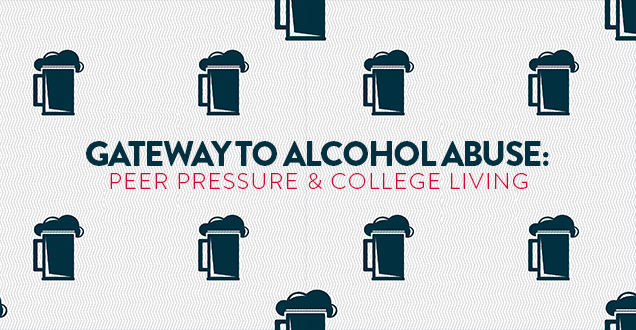
As we enter the month of June, many students are busy welcoming the end of another semester yet bogged down by the stress of the always daunting final exams. Most college students are looking ahead to what is just around the corner, which frequently includes raging parties to blow off steam and celebrating the completion of finals. While college drinking has been depicted in many books and movies as the “glorified” pastime, often times this excessive drinking can contribute to short and long-term problems.
Remember the Glory Days
From drinking songs to beer pong, movies glamourizing excessive teenage drinking, and family members sharing tales of alcohol filled benders, a culture has developed that embraces college drinking to the excess. Many students enter college on a quest to participate in the glamorized “college experience” that is riddled with drinking and partying. Unfortunately for some, this is the beginning of the serious disease of addiction that impacts so many lives.
A Taste of Freedom
For most college students, living on campus is their first encounter with personal freedom and independence. They are no longer concerned about being grounded or disciplined by their parents. However, the newfound freedom comes at a pivotal time in the life of a young college student. While considered to be an “adult” in many ways, studies have shown that the brain does not fully mature until around the age of 25 years. While succumbing to peer pressure, they lack the ability to monitor themselves or others.
College Students and Peer Pressure
According to a study by Syracuse University that researched “Peer influences on College Drinking”, peer pressure is a result of three powerful influences:
- Overt Offers: From polite to intense pressure to consume alcohol
- Modeling: Behavior corresponds to that of other students
- Social Norms: Excessive drinking considered normal
Where families once provided much of the influence on a teenager’s life, a college student’s behavior is now molded by other individuals who may be irresponsible, inexperienced, and impulsive.
A Drinking Culture
The National Institute on Alcohol Abuse and Alcoholism published a study on the “Diagnosis and Assessment of Alcohol Use Disorders Among Adolescents” that reported on the culture of drinking amidst college students between the ages of 18 and 22 and determined the following results:
- Over 60 percent drank alcohol in the month prior to the survey, compared to 51.9 percent of same-age peers not in college
- Over 40.1 percent engaged in binge drinking (five or more drinks) compared to 35 percent of their non-college peers
- More than 14 percent engaged in heavy drinking (five or more drinks per occasion five or more times per month) compared to 10.7 percent of non-college peers
The consequences for those who regularly participated in alcohol-related activities showed an increased number of skipped classes, poor grades, and falling behind in studies.
Serious Dangers of College Drinking
Alcohol related incidents involving college students aged 18 to 24 is a growing concern for parents and administrators as well as the community. The National Institute on Alcohol Abuse and Alcoholism provided the following statistics reporting on the consequences of college age drinking:
- Each year there are about 1,825 college students who die from alcohol-related injuries, including motor-vehicle crashes
- Almost 700,000 students are assaulted by other students who have been drinking
- Approximately 97,000 students fall victim to alcohol-related sexual assault or date rape
Additionally, about a fifth of college students meet the criteria for a diagnosis of an alcohol use disorder. Those who develop the disorder early in life tend to have more significant alcohol issues as they get older.
Post-Graduation Impact of Alcohol Abuse
Researchers believe that the adolescent brain is far more susceptible to damage due to alcohol abuse than the adult brain. Even those who do not develop an addiction problem are putting themselves at risk for other problems including death, injury, assault, sexual abuse, unsafe sex, academic problems, suicide, depression and problems with the law. Intervention and getting treatment is vital in overcoming an addiction. However, while one in five college students may meet the diagnostic criteria for an alcohol use disorder, only five percent seek treatment according to the National Institute on Alcohol Abuse and Alcoholism.
Treatment for College Students with Alcohol Abuse Problems
Identifying addiction problems in college students presents a challenge due to the culture of the “college experience”. However, college campuses are taking a more proactive approach in providing support through alcohol education, limiting the availability of alcohol, offering more alcohol-free activities, along with providing strong leadership among staff members and improved partnerships within the community and among the parents. Treatment for this age group is often highly successful providing students with an opportunity to meet their full potential and develop the tools needed to stay sober.



